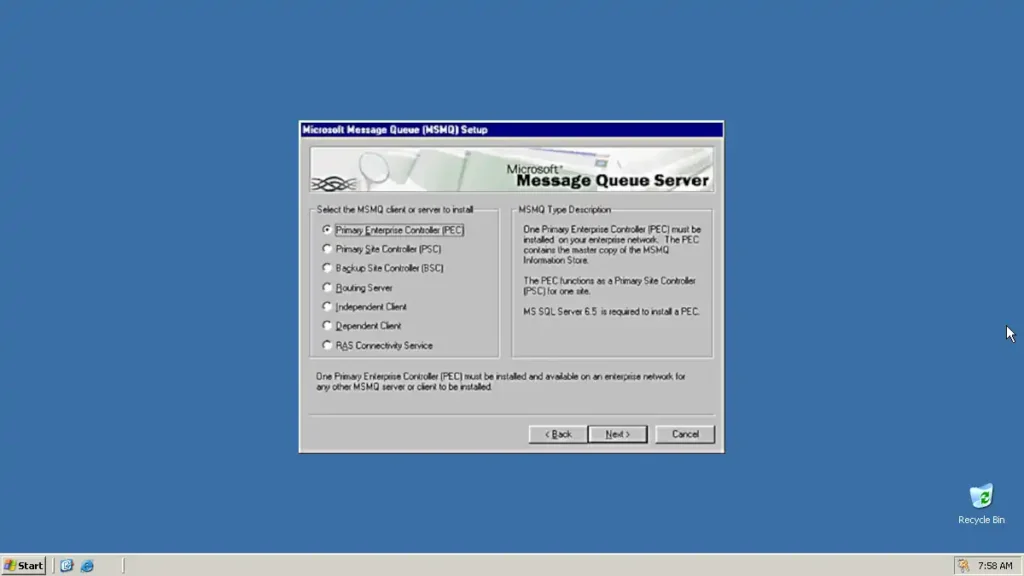Backup Site Controller (BSC) was once a critical piece in Microsoft Message Queue Server (MSMQ) frameworks. Though now largely supplanted by more modern technologies, understanding BSC can provide valuable insights into the historical progression of fault tolerance and load balancing solutions. This article revisits the role of BSC in legacy systems and discusses contemporary alternatives.

The Historic Role of Backup Site Controller (BSC)
In MSMQ configurations of the past, the Backup Site Controller maintained a read-only database replica from the Primary Site Controller (PSC) or Primary Enterprise Controller (PEC). It functioned as a fail-safe, providing continuity during system hiccups.
MSMQ Routing Server Functionality
In addition to its backup responsibilities, the BSC also acted as an MSMQ Routing Server. It facilitated intermediate message queuing services and participated in dynamic routing to optimize message pathways across the network.
The Era of Obsolescence
While BSCs were relevant in systems running on older versions like Microsoft Windows NT Server, Enterprise Edition, they have been largely phased out in favor of more advanced and efficient solutions. If you’re working with current technologies, chances are you won’t encounter a BSC outside of maintaining or decommissioning legacy systems.
Modern Alternatives
- Containerization & Orchestration: Technologies like Kubernetes and Docker Swarm offer more flexible and robust solutions for load balancing and fault tolerance.
- Cloud-Based Services: AWS, Azure, and Google Cloud provide managed queuing services like Amazon SQS, Azure Queue Storage, and Google Cloud Pub/Sub that are designed for high availability and scalability.
- Microservices Architecture: Modern approaches to software design focus on loosely-coupled, independently deployable microservices that offer built-in load balancing and fault tolerance features.
Why Understanding BSC is Still Relevant
While BSC technology is mostly a thing of the past, the fundamental principles behind it—such as load balancing and fault tolerance—are timeless. Gaining an understanding of how these mechanisms were achieved in legacy systems can deepen your appreciation for the advancements that have taken their place.
Conclusion
Backup Site Controllers have been largely replaced by more efficient and resilient technologies. However, their historical importance should not be overlooked. They serve as a stepping stone to understanding the evolution of fault tolerance and load balancing techniques, paving the way for the more sophisticated solutions we use today.